Canon EF 35mm f/1.4L II USM Review

Introduction
The Canon EF 35mm f/1.4L II USM is a very fast, moderate wide-angle lens for Canon's full-frame DSLRs, incorporating two aspherical elements and one UD glass element in a 14 element, 11 group optical formula. Featuring Blue Spectrum Refractive Optics technology to achieve a higher level of chromatic aberration correction, Sub-Wavelength Structure Coating (SWC) to help combat flare and ghosting, an ultrasonic focus motor, a 9-blade circular aperture, silent high-speed AF performance and full-time manual focusing, the new Canon EF 35mm f/1.4L II USM is ideal for travel and reportage photography. The Canon EF 35mm f/1.4L II USM is available now for £1799.99 / $1799.99 in the UK and the USA respectively.
Ease of Use
As this is a very fast, premium wide-angle prime lens, the Canon EF 35mm f/1.4L II USM is predictably big and bulky, weighing in at 760g and measuring 10.5cm in length. You can use it on a smaller Canon EOS APS-C body for a 56mm equivalent angle of view, but it balances much better on a full-frame camera like the EOS 5DS R that we tested it with.
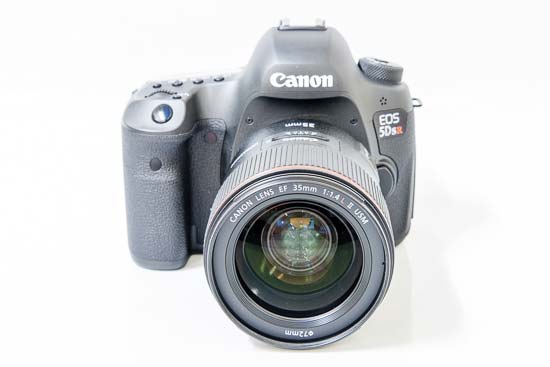 The Canon EF 35mm f/1.4L II USM lens mounted on the EOS 5DS R
The Canon EF 35mm f/1.4L II USM lens mounted on the EOS 5DS R
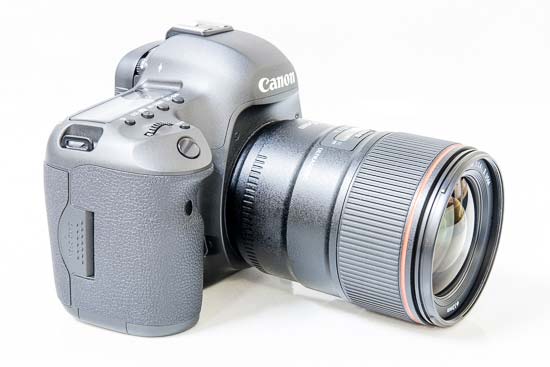 The Canon EF 35mm f/1.4L II USM lens mounted on the EOS 5DS R
The Canon EF 35mm f/1.4L II USM lens mounted on the EOS 5DS R
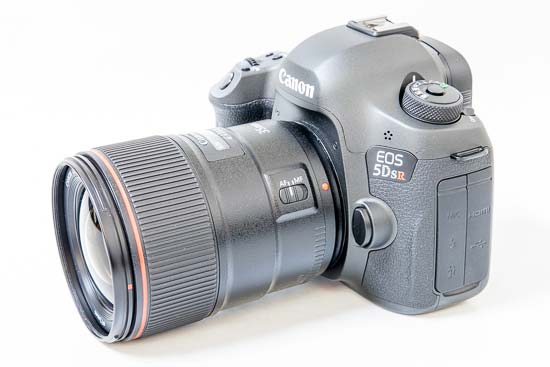 The Canon EF 35mm f/1.4L II USM lens mounted on the EOS 5DS R
The Canon EF 35mm f/1.4L II USM lens mounted on the EOS 5DS R
As you would expect from a lens that costs this much, build quality is excellent, certainly living up to the "L" moniker that denotes Canon's premium lenses. The Canon EF 35mm f/1.4L II USM feels very solid in your hand, even if the outer barrel and the filter thread appear to be made from plastic. The focusing ring is a good size and has a ridged, rubberised grip band. It has no aperture ring, though, which is no big deal unless you wanted to use it on a very old film body.
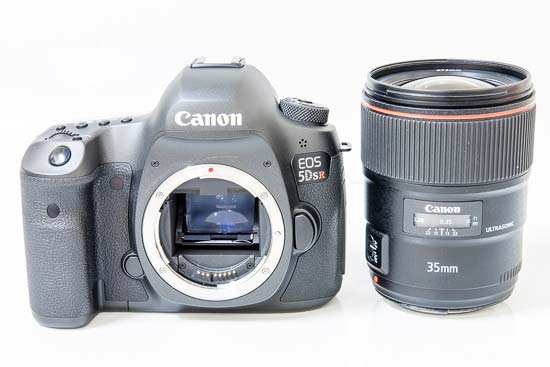 The Canon EF 35mm f/1.4L II USM lens alongside the EOS 5DS R
The Canon EF 35mm f/1.4L II USM lens alongside the EOS 5DS R
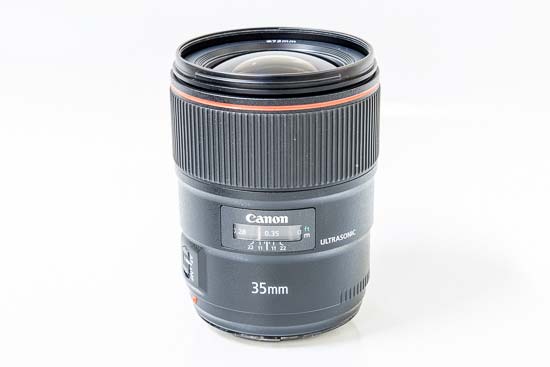 Side of the Canon EF 35mm f/1.4L II USM lens
Side of the Canon EF 35mm f/1.4L II USM lens
The lens features a distance scale complete with a DOF scale, although the latter is of limited use, having markings for f/11 and f/22 only. Still, certainly better than nothing.
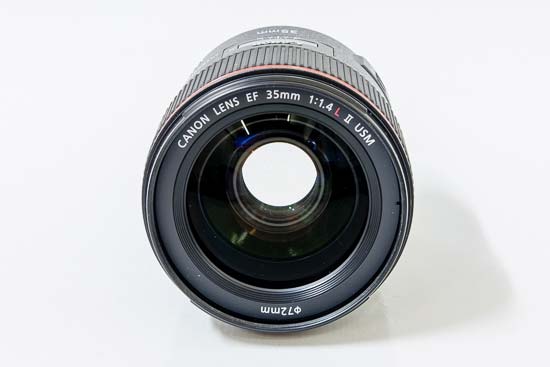 Front of the Canon EF 35mm f/1.4L II USM lens
Front of the Canon EF 35mm f/1.4L II USM lens
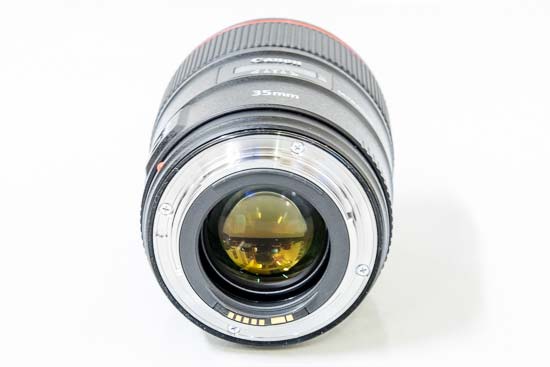 Rear of the Canon EF 35mm f/1.4L II USM lens
Rear of the Canon EF 35mm f/1.4L II USM lens
The only other control on the lens barrel is a focus mode switch with the usual AF/MF settings. Note that this lens offers full-time manual focusing even when AF is selected.
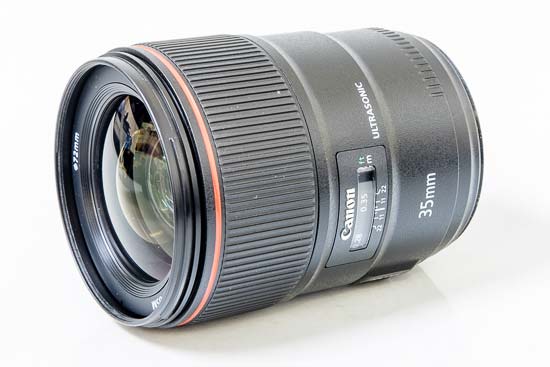 Side of the Canon EF 35mm f/1.4L II USM lens
Side of the Canon EF 35mm f/1.4L II USM lens
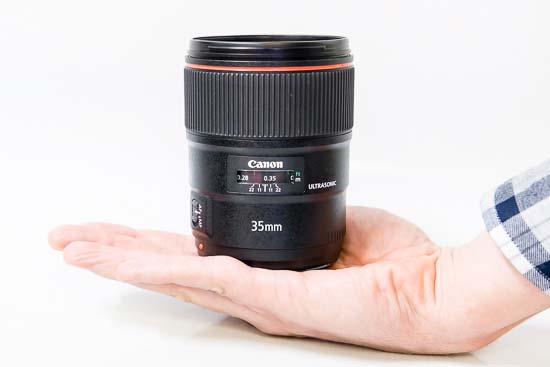 The Canon EF 35mm f/1.4L II USM len in-hand
The Canon EF 35mm f/1.4L II USM len in-hand
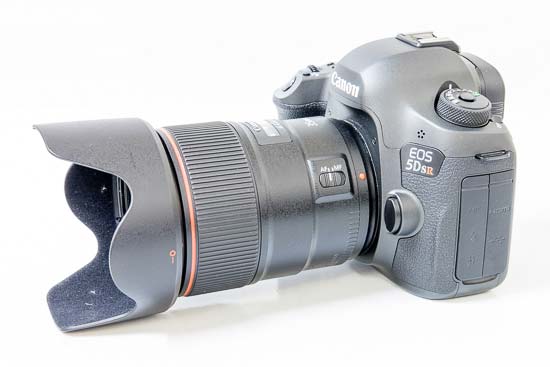 The Canon EF 35mm f/1.4L II USM lens with the supplied lens hood fitted
The Canon EF 35mm f/1.4L II USM lens with the supplied lens hood fitted
The lens ships with a plastic petal-shaped lens hood (EW-77B) and a protective bag.
Focal Range
At the 35mm focal length the angle of view is 63 degrees.
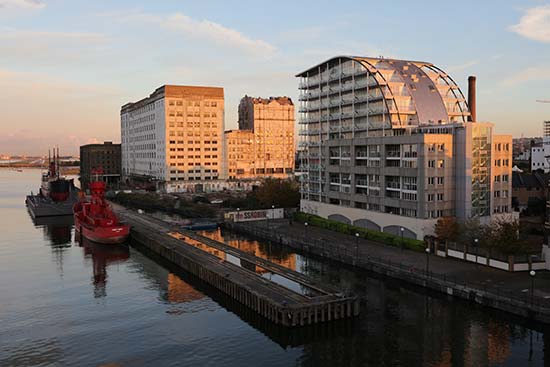 Field of view at 35mm
Field of view at 35mm
Focusing
The Canon EF 35mm f/1.4L II USM lens has quite a large focus ring. There are hard stops at both ends of the range, making it easier to set focus at infinity. Polariser users should be pleased that the 72mm filter thread doesn't rotate on focus.
When it comes to auto-focusing, the Canon EF 35mm f/1.4L II USM zoom is a quick performer, taking about 0.15 seconds to lock onto the subject when mounted on the Canon EOS 5DS R that we tested it with.
We didn't experience much "hunting", either in good or bad light, with the lens accurately focusing almost all of the time. It's also a quiet performer, thanks to the built-in USM (Ultra Sonic Motor), which makes this lens well-suited to video recording.
Chromatic Aberrations
Chromatic aberrations, typically seen as purple or blue fringes along contrasty edges, are impressively well controlled with this lens - the examples below show the worst-case scenario.
 |
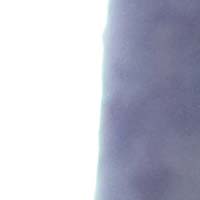 |
Light Fall-off
With the lens wide open at f/1.4, you can see some noticeable light fall-off in the corners. Stopping down helps, although to completely get rid of this phenomenon, you will need to use an f-stop of f/4 or smaller.
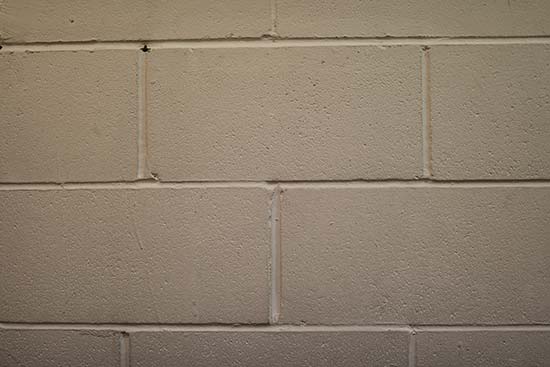
Macro
The Canon EF 35mm f/1.4L II USM is not a macro lens. The close-focus point is at 28cm from the film/sensor plane, and Canon quotes a maximum reproduction ratio of 0.21x for the lens. The following example illustrates how close you can get to the subject, in this case a CompactFlash card.
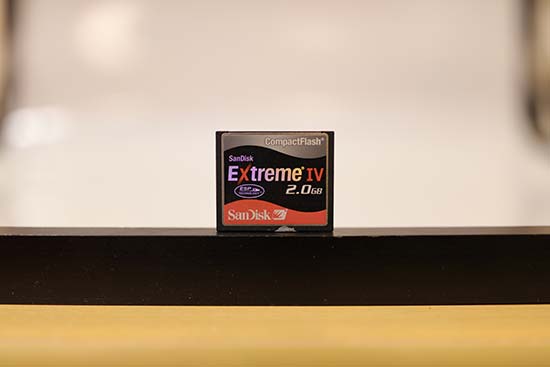 Close-up performance
Close-up performance
Bokeh
Bokeh is a word used for the out-of-focus areas of a photograph, and is usually described in qualitative terms, such as smooth / creamy / harsh etc. One of the reasons to buy a fast lens is to be able to isolate the subject from the background, which is normally very hard to do with a wide-angle lens. Canon was apparently very much aware of this requirement, as they employed an iris diaphragm with 9 rounded blades for a very pleasing rendering of the out-of-focus highlights. Based on what we have seen, we can say that they largely succeeded. Below you'll find some examples, but you are also encouraged to check out our sample images.
 |
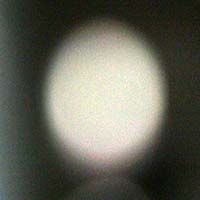 |
 |
 |
Sharpness
In order to show you how sharp this lens is, we are providing 100% crops on the following page.
